“The City Of East Sioux Falls”

(Note: any text in italics has been taken from the official SDSHS records.)
Subject
A place. The historical city of East Sioux Falls which was abandoned in the 1950s.
Marker Text
From 1887 to about 1913, this area, bordering the Big Sioux River, was the thriving community of East Sioux Falls. The city boasted a hotel, several boarding houses, saloons and retail stores, a town hall, a cricket team, at least three church congregations, many modest homes and a population of almost 600. Founded by C.W. Hubbard, the city was first called Ives. It was a company town set up to quarry the great deposits of Sioux quartzite and to cut the stone into paving and building blocks. When the post office was established in 1888, Ives was renamed East Sioux Falls. The new name may have sounded more suburban to those courting eastern investors.
The city prospered. Large quantities of stone were shipped by the Illinois Central Railroad to Detroit, St. Louis, Chicago and other distant cities. Sioux Falls and other area communities also used the stone in many magnificent examples of 19th century architecture.
The industry attracted Welsh, English and Scottish stonecutters and their families. Their number soon outgrew the housing provided by the company. Many moved to Sioux Falls and Rowena, as East Sioux Falls bore a striking resemblance to a mining boomtown. Unlike its quiet, sedate neighbors, East Sioux Falls had a bawdy, wide-open appearance, where drinking, fighting and carousing were more than occasional diversions.
The work of the stonecutters was highly skilled but dangerous, for they risked contracting a lung ailment from breathing the fine ‘Jasper dust,' a residue of the cutting process. Many cutters died young or were severely disabled by the ‘stonecutters’ consumption.'
In the summer of 1890 South Dakota’s first electric railway, the South Dakota Rapid Transit and Railway Company, made its maiden run between Sioux Falls and East Sioux Falls. The electric line carried cutters to and from the quarries, while others took the ‘trolley’ out to East Sioux Falls on weekends and holidays for picnics in the wooded park along the river, or just for the fun of the ride. On July 4, 1892, 3,500 revelers flocked to the park to be entertained by bands, songs, skits and sports.
The financial ‘Panic of 1893’ and growing competition from other materials led to decreased demand for the more elegant, and more costly, quartzite. By 1910, the quarries were producing only a small amount of crushed rock for concrete making. In 1913, the town government self- dissolved. By the 1950s, a store was the only business left, and in 1991 the remaining houses, empty shells, were razed. Once vibrant, now silent, all that remains are some railway spurs, empty quarries, the base for a crusher, stone foundations and the past.
Dedication Note
Erected in 1994 by the Minnehaha County and South Dakota State Historical Societies and Mary Chilton DAR Foundation
Location
Minnehaha County, East from Sioux Falls on SD 42, west side of Big Sioux River Bridge (2006)
Take 10th Street east, like you were going out to Grand Falls Casino. It turns into Highway 42. The marker is on a pulloff area just before the Mary Jo Wegner Arboretum, on the north side of the road.
Is there anything to see?
Not at the marker. The marker is just on the side of the road, however there are some things to see on the property of the arboretum next to to it. There are some remaining foundations of houses in the city, several information boards, and something that looks like another historical marker (see pictures below), but isn’t actually in the registry – it appears to be something like a “sub-marker” related to this one.
Marker Images

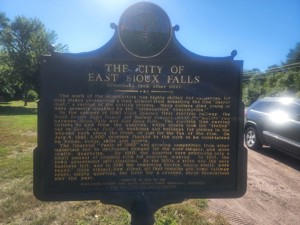
Other Images
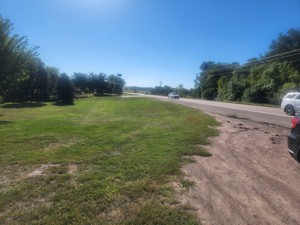
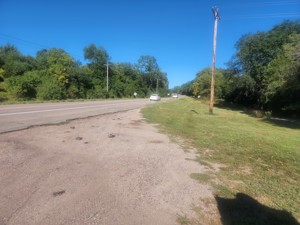
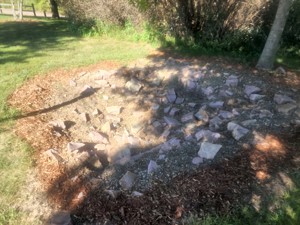
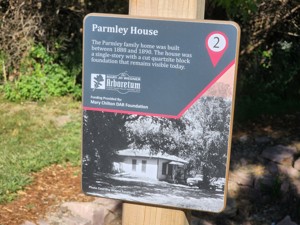
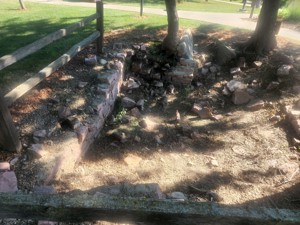
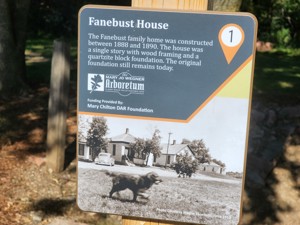
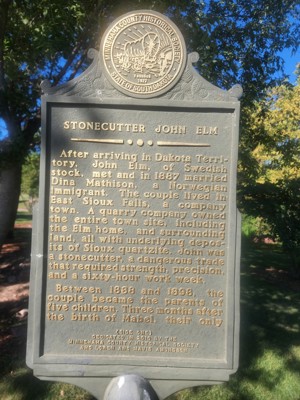
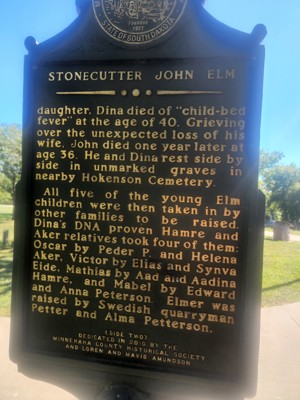
Links to Additional Information
The city appears to have been built around the existence of quartzite – the ubiquitous “pink rock” around the city. There’s the Wikipedia page on quartzite.
The sign mentions “Jasper lung.” Jasper was stone closely related to quartzite, both from the family Cryptocrystalline. The city of Jasper, Minnesota – about 40 miles from Sioux Falls – takes its name from the nearby deposits of this mineral.
The Panic of 1893 was general economic depression. It coincided with the rise of the People’s Party, which Richard F. Pettigrew was associated (he was a South Dakota senator during this time).
I couldn’t find much on why the city would have originally been called “Ives.” There was a Captain Francis Joseph Ives serving in South Dakota during that time. He was an Army surgeon, and his notebook of injuries he treated at Wounded Knee is kept in the South Dakota Historical Archives.
Notably, there was also a West Sioux Falls during the same time period, located roughly where Elmwood Golf Course stands today. There’s a corresponding historical marker there.